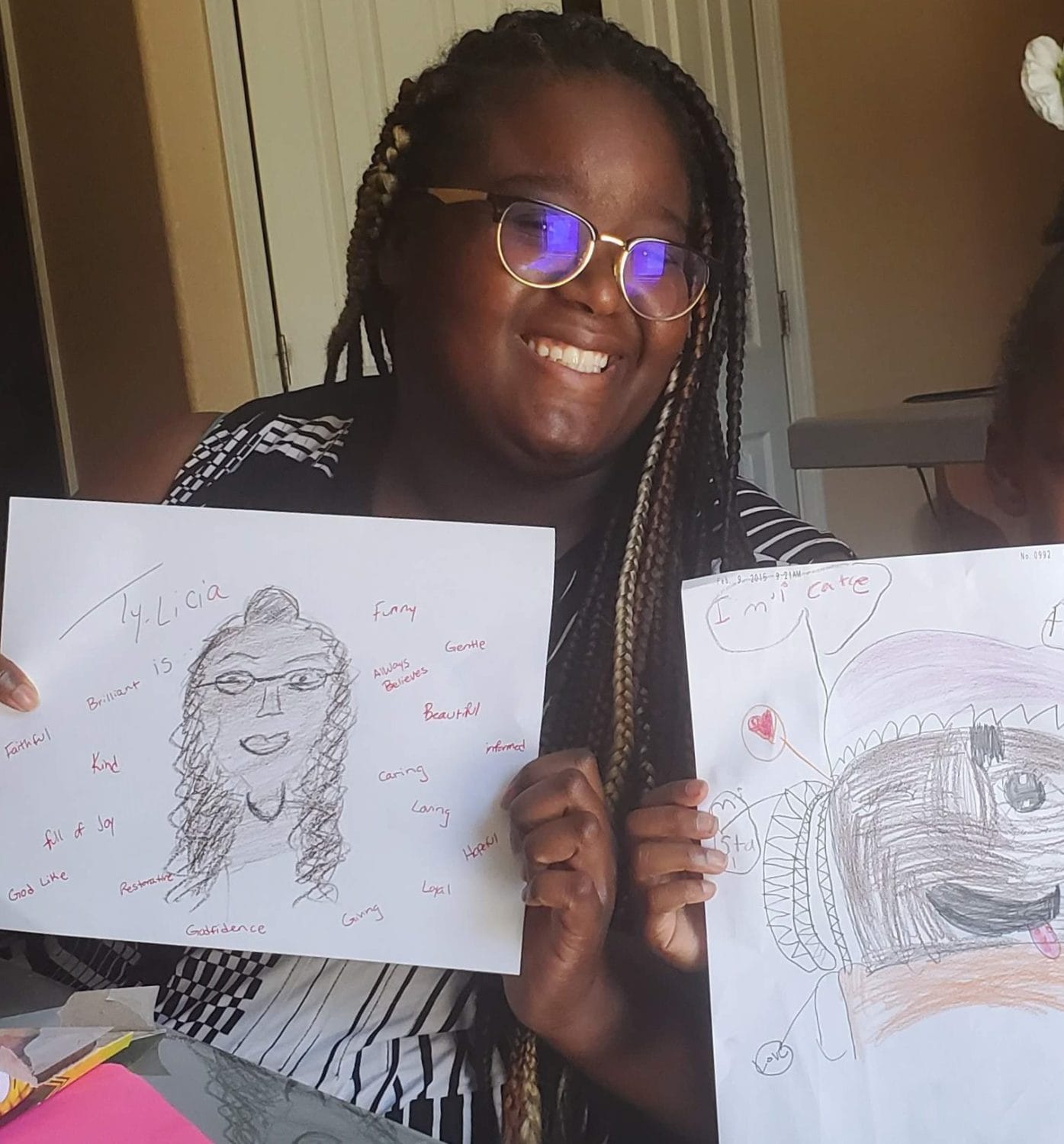
by Ty-Licia Hooker, Black New World Media and Executive Director of Boost! West Oakland and Student Success and Leadership Academy
The COVID-19 pandemic has forced schools to close across the world. As an educator, I know firsthand the disparities that exist in the classroom. When the pandemic began, I recognized how inequities in education would manifest themselves as distance education unfolded.
We have been told to stay home and shelter in place for the past 95 days and counting. Today, I am exhausted. I spent the day with my baby cousin, a first grader who I will call “Charly” for the sake of this article.
Charly’s mom dropped her off last night for an overnight visit. This morning, she joined me in the kitchen, curious as to what I was doing. I shared with her that I was working on a task list of all the things I needed to accomplish for the day.
She asked if she could do the same, explaining how her teacher would make a list of things to do in class on the board every day. But Charly’s enthusiasm soon turned cold. “What’s wrong? Do you miss school?” I asked. She sadly nodded her head, yes.
“What do you miss the most?” I prompted. “Everything,” Charly replied. “I miss my friends, my teacher, our lunch, recess and learning new things. I haven’t learned since we’ve been out of school.”
Her words cut me. The day before, my mom shared with me that Charly missed out on the last three months of school. Charly received a laptop from the school for distance learning, but she was unable to log in. First, her laptop charger didn’t work. Then, with her mom out of work, they moved around a lot. As they moved, the internet was unreliable, which made online classes impossible.
Listening to Charly express her sadness about being unable to attend school made me break on the inside. With it came the realization that Charly wasn’t the only student who couldn’t formally learn during this time. I quickly went from sadness, to anger, to action.

Mercy News has reported that half of Oakland’s 50,000 public school students don’t have their own computer or internet access or are under-connected. For students in West Oakland, the figures are especially distressing. An Oakland Unified School District (OUSD) educator in West Oakland shared, “Out of my class of 25 students, only three logged into the online learning platform weekly.”
OUSD projects that every student will have computers and internet access in the 2020-21 school year. However, in a press release in May 2020, OUSD Communications Director John Sasaki stated that there is still additional work needed to develop sustainable citywide internet connectivity, support students with computers in the classroom, and implement relevant technology for teachers.
Charly sat next to me at the kitchen table, and I decided that today she could make her own list. We brainstormed things she did at school, which included reading, writing and math. She took a deep breath. We hear that it takes a village to raise a child, and in her village, I am both her big cousin and her educator.
Below is our List of Fun and Learning. We co-created this list based on what Charly missed about school, what she enjoyed and what we needed to get done. Every activity on her list is intentional:
9:30 a.m. – Reading. Charly read her favorite book. Allowing your child(ren) to pick what they want to read allows choice and self-agency. I also gave her the option to read aloud or silently. She decided to read silently, and afterward we discussed the plot and her favorite part.
10:00 a.m. – Journal and Art. Each day I journal, and this month I am working on a self-love challenge. The prompt of the day required me to write down all the positive qualities I have. This question transcends age.
To include Charly, I added drawing because she loves to draw, and it gave us space to use colors while also pushing her to practice writing. Even deeper, she is also cultivating positive self-esteem and learning that everything that she is, even at 7, is enough.
11:00 a.m. – Lunch. For lunch, we made stuffed bell peppers. This was a dish she had never eaten before. It was new, nutritious and also our math lesson of the day. I used the green and red bell peppers to set up basic addition and subtraction math equations.
12:00 p.m. – Walk the dog. This was a fun, easy way to get outdoors and get in exercise.
12:45 p.m. – Dog training tutorial! This activity allowed Charly to watch an educational video, took what she learned in the video and apply it to the dog.
2:00 p.m. – Skate. More exercise and fun!
2:30 p.m. – TikTok with the Dog. This was her capstone for the day. After all that hard work, Charly deserved a dance break and an artifact to show how she spent her day of fun and learning.
So here we are, at 3:00 p.m., exhausted. Charly is snoozing on the couch, having done more work here today than she has done in months. I, on the other hand, am just beginning my workday. Reflecting on the day, I am frustrated for two major reasons.
First, I acknowledge the privilege I have as an experienced educator, namely a former Kindergarten teacher. I can work from home and build my own schedule, which allowed me to be creative with Charly. I know what to do and how to do it, but many folks with children don’t have the same privilege.
Second, there are so many kids like my baby cousin who have gone months without learning academically or interacting socially. This is hard, and I have even more compassion for all of you reading this who are trying to find ways to keep kids learning in such an isolated time.
There is no handbook to this moment, but we do have each other. As a Black woman and educator, it is my duty to continue to apply pressure on the current education system and use my agency to do what matters for the young people in my life.
This isn’t just a pandemic problem. The inequity of education for Black students in this country has been a widely discussed topic since we obtained the right to be educated in this country.
As significant as that is, think of what you can do now to start to tackle it. If any of the above suggestions sound useful to you, find the children in your family and offer to support them in any way that you can. It takes a village, and our babies need the excellence and support that you have to offer.
Contact Ty-Licia Hooker at tylihooker@gmail.com.





